Feeling stuck growing your nonprofit? Good news. There’s a formula for steady growth and big impact.
Feeling stuck growing your nonprofit?
Maybe you look at it and wonder if it’ll ever make the impact you dreamed it would.
You’re not certain where you’ll get funding for your coming projects.
And sure, you have your amazing blue staff and volunteers…
…but being the leader makes you feel SUPER lonely at times.
You wonder if there’s a formula for steady growth and big impact.
The good news?
There is.
In this blog I’ve compiled the top seven for you, so you never again feel lost and burnt out, wondering how you’re going to change the world in a lasting way.
Let’s dive in!
7 SIMPLE KEYS FOR NONPROFIT GROWTH: HOW TO MAXIMIZE YOUR POTENTIAL AND REACH
I know, it can get confusing.
There’s a ton of advice and solutions out there, promising the world. ????
But none of them seem to work, and you end up stuck in the same place you started.
Let me tell you this.
Stop picking up and dropping new solutions every day.
Stick to these seven simple keys for nonprofit growth, and you’ll soon be scaling larger than you ever thought you could.
Key #1: Advocate and Serve

To grow your nonprofit, it’s not enough to only advocate or only serve.
You need to do both.
Follow these tips so you never leave one or the other out.
How to advocate for your nonprofit.
- Start small. For example, you can join a coalition meeting or get together with a group of passionate, concerned donors.
- Take note of your strengths. When you’re able to list down your strengths, you’ll have a better idea on how you can participate in advocacy.
- Leverage stories. Collect stories from the people whose lives you’ve impacted. These will be powerful messengers in your advocacy.
Is advocating for your nonprofit worth it?
Of course.
In fact, connecting your fund raiser with an advocacy appeal can grow your donations up to 3x.

How to serve your nonprofit.
- Think about your constituents’ needs.
- Step into their shoes and understand things from their point of view.
- Involve them in the planning of your organization’s goals.
Key #2: Look to the Marketplace

By engaging private businesses in your nonprofit’s work, you’ll:
- Have access to larger funding.
- Reach a bigger audience.
Yes, it can be intimidating. But it’s worth the try every time.
Follow these simple steps to get the most success when you approach businesses for donations.
- Do in-depth research about your donors. Never meet with donors empty-handed! Spending a few hours learning to “read their minds” will go a long way towards touching their hearts.
- Involve your donors. Seriously, ask their advice. As Michael Colt says , “Ask for money, and you’ll get advice. Ask for advice, and you’ll get money twice.”
- Show your donors their impact. Never ask for a sum of money for a generic cause. Instead, let your donors see exactly where their money is going. Allow them to be involved. For instance, if their donation is going to books for schoolchildren, tell them the titles of the books you’re going to buy. When you’ve bought them, thank your donors by sending them pictures of the kids enjoying their new books.
Key #3: Inspire Evangelists

According to Oxford Learner’s Dictionaries, an evangelist is a person who seeks to convert others to the Christian faith.

Source: oxfordlearnersdictionaries.com
The truth is, it’s amazing what evangelists can do.
Just think of it. The first evangelists, uneducated fishermen from a tiny town in Israel, inspired by a Divine Teacher.
What started with 12 passionate evangelists grew into the world’s largest religion.

And evangelists aren’t limited to religious groups.
Another definition of the word is, “a zealous advocate of something.”
When you have people on your side who believe 100% in what you do, your organization will grow limitlessly.
Here are two great ways to inspire evangelists.
- Tell stories. Stories tug on heartstrings. Show people the “who” behind your nonprofit, whether that’s kids who need education, teachers who want to grow their library, or homeless people who need meals and clothes. Don’t be generic. Give these people names, stories, and backgrounds. Bring them to life.
- Make them a part of it. Show evangelists how their passionate work can change lives and change the world. Give them concrete numbers and examples.
Key #4: Nurture Nonprofit Networks

Remember, you’re not alone.
There are other organizations that care about the same cause you do.
When you join forces with them, you’ll become stronger and achieve more. This is true with advocacy, when you try to change laws to favor your constituents.
Keep these three things in mind when reaching out to team up with other organizations.
- Find leading organizations in your area with the same mission you have (a simple Google search will point this out to you).
- Reach out to collaborate with them.
- Listen carefully to what they say and think deeply on how you can complement what they do.
Key #5: Master Adaptation

This might come as a surprise to you, but your nonprofit efforts can quickly grow irrelevant if you’re not careful.
Imagine this.
You run a nonprofit with a mission to add books to public school libraries.
But when the COVID-19 pandemic struck, children’s needs changed. Instead of needing new library books, they needed a way to access remote learning. (At least a third of the world’s student population was unable to gain access to remote learning during the pandemic.)
Suddenly, kids needed laptops and internet connection.
If your nonprofit shifted to fill this need, then you stayed relevant to your demographic’s new demands.
If you continued supplying books to libraries, you became irrelevant in the face of change.
To keep serving your core demographic, make sure you’re always in tune with their deepest needs.
Never be underprepared or afraid to shift to meet these needs.
Key #6: Share Leadership

Always remember that you’re never alone when running your nonprofit.
Think of the people around you. Your blue staff members. Your volunteers. Your friends.
Together, you can make things happen.
How?
Simple. Learn how to share leadership.
Of course, I don’t mean every single member of your team should be at the top. That’s where you should be.
What I mean is everyone should be leaders of their own particular areas. They should feel fully in charge of these areas, no matter how small.
When you share leadership, you’ll:
- Avoid burning out
- Have a more engaged and passionate organization
#7: Have the Right Mindsets for Growth
I talk about this in depth in my course (watch the FREE 60-minute masterclass here), but let me give you a little idea to get you started.
You may have the right processes and solutions to grow your nonprofit.
But without the right mindsets, you have nothing.
The right mindsets ensure you scale bigger than you thought, while the wrong mindsets limit you and keep you groveling on the ground.
So, what are these mindsets and how do you develop them?
One thing I do to guide businesses, ministries, and organizations is to help them get clear on WHY they exist.
The first question I always tell them to ask is, “Why do we exist?”
This seems obvious, but the truth is that a ton of them time, nonprofits get lost because they fail at the first step: knowing EXACTLY what their ultimate goal and mission is.
Once you get this clear on this, you can build the right growth mindsets around it.
I discuss this is great detail in my Sparrows Nonprofit Solutions course. In it, I dive into:
- The four questions you need to ask to build the right mindsets (#1 is “why do we exist?”)
- The huge difference between impact-ENHANCING and impact-LIMITING mindsets (and how to choose the former so you never again prevent your organization from growth)
- How to assess the current state of your organization’s mindsets
- How to develop your big FROM-TO (so you get from where you are to where you want to go)
- The exact model to follow for consistent change
And mindsets are only the beginning.
In this course, I’ll dive even deeper and show you how to develop your impact skills, systems, and key performance indicators (KPIs).
If you’re longing for growth but feeling tired and burnt out, you’re not alone. With this course, you’ll get the support and systems you need to scale without giving up your happiness.
Start here. Watch my FREE 60-minute masterclass, which is a value-packed hour of learning how to build brand influence for your nonprofit, how to design systems that grow your nonprofit without you burning out, and more.
HOW TO GROW YOUR NONPROFIT: IT’S NOT AS VAGUE AS IT FEELS
To summarize, there are three main donor groups nonprofits seek:
- Individuals
- Businesses
- Foundations
Individuals have the most potential for revenue for your organization.
Businesses are conscientious about their social responsibility and have the funds for philanthropy projects (which could be you!).
Foundations award grants to help perpetuate the good deeds of nonprofits like yours.
Regardless of which donor category you want to reach, identifying the right target audience is the key to success.
Understanding your audience helps you develop customized, relevant content that resonates with people.
This is how you build the connections with people that are so important in securing donations.



